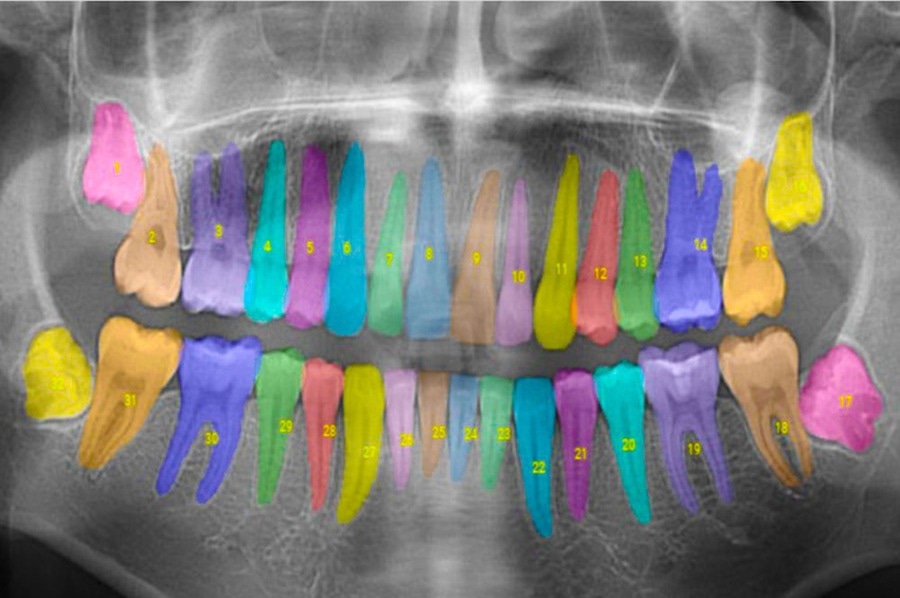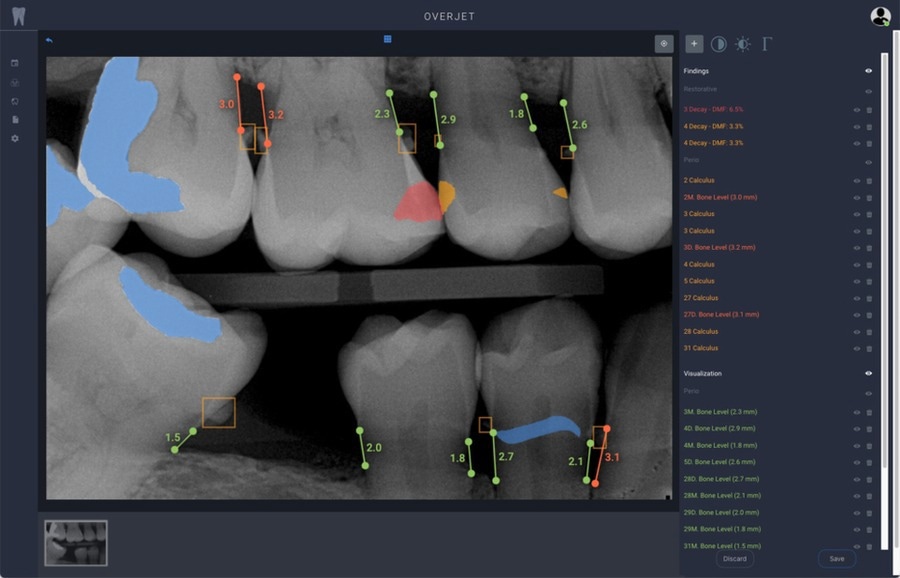Dentists are faced with a multitude of tasks when running a surgery and ensuring patients receive the appropriate care and treatment. No wonder when it comes to analyzing X-Rays there can be a specific range of subjectivity that raises questions about what course of action is best taken.

Image Credit: MIT, Courtesy of Overjet
As such, Overjet, an MIT alumni-founded company, is making endeavors to try and take the subjectivity out of dental X-Ray interpretation using artificial intelligence (AI) and, as a result, improve patient care.
It’s about moving toward more precision medicine, where we have the right treatments at the right time.
Wardah Inam, Co-Founder of Overjet
“That’s where technology can help. Once we quantify the disease, we can make it very easy to recommend the right treatment,” she added.
FDA Approval
The U.S. Food and Drug Administration (FDA) has recently approved Overjet’s technology for use in cavity detection and to clarify bone density levels to properly diagnose periodontal disease – commonly known as gum disease, which causes deterioration of the tissue and bone in the jaw supporting the teeth.
Overjet’s software can help dentists identify certain diseases and conditions and assist dentists in offering patient explanations regarding the appropriate course of treatment to be taken.
The AI has already been able to access tens of millions of X_Ray records to harvest its data while also working closely with insurance companies to finetune functionality while ensuring patients receive the highest level of care.
Our mission at Overjet is to improve oral health by creating a future that is clinically precise, efficient, and patient-centric.
Wardah Inam, Co-Founder of Overjet
The Roots of Overjet
Inam was attracted to software and AI development in the dental industry through unconventional means. After suffering a series of bad experiences in 2018, Inam was confused about why she was offered conflicting and varying diagnoses and advice on her treatment plans.

Image Credit: MIT, Courtesy of Overjet
After conducting her own research on dentistry and the industry at large, Inam soon discovered she was pursuing her interest in this field rather than her own and was motivated to solve some of the key issues in the industry.
During her postdoc at the Computer Science and Artificial Intelligence Laboratory (CSAIL) at MIT, she discovered MIT’s Hacking Medicine competition and made the decision to participate. Around the same time, she quit her job and formed a team that helped her to quickly establish the company’s roots and form a number of new connections.
Overjet received its first round of funding from the Media Lab-affiliated investment group, the E14 Fund.
The E14 fund wrote the first check, and I don’t think we would’ve existed if it wasn’t for them taking a chance on us.
Wardah Inam, Co-Founder of Overjet
Varying Treatment Recommendations
While conducting her research, Inam also learned that one of the reasons for varied treatment recommendations when offered a diagnosis is because there is typically more than one way to treat a particular dental problem. Cavities, for example, can be treated with simple fillings all the way up to more complex procedures such as a bridge, crown, or even root canal.
When evaluating how best to treat periodontal disease, dentists must make millimeter-level assessments to establish the severity and progress of the disease. This, in turn, establishes the best course of action helps dentists create a treatment plan.
“I felt technology could play a big role in not only enhancing the diagnosis but also to communicate with the patients more effectively so they understand and don’t have to go through the confusing process I did of wondering who’s right,” Inam says.
Overjet’s software has the capacity to automatically analyze and annotate X-Ray images. When the image then appears on the screen, there will be information on the kind of X-Ray taken, how a tooth may be impacted, the precise level of bone loss with color overlays, the severity and location of specific cavities, etc. This provides dentists with a great deal of more information to offer patients when discussing the best available treatment options.
“Now the dentist or hygienist just has to synthesize that information, and they use the software to communicate with you,” Inam says. “So, they’ll show you the X-rays with Overjet’s annotations and say, ‘You have 4 millimeters of bone loss, it’s in red, that’s higher than the 3 millimeters you had last time you came, so I’m recommending this treatment.”
With the FDA’s approval to focus its efforts on cavity detection and periodontal disease, Overjet’s next step is to conduct further analysis and see how it can unify best practices throughout the industry. Inam hopes to see Overjet playing a central role in day-to-day operation in almost every aspect of dental treatment.
References and Further Reading
Winn, Z., (2022) Taking the guesswork out of dental care with artificial intelligence. [online] MIT News | Massachusetts Institute of Technology. Available at: https://news.mit.edu/2022/overjet-dental-artificial-intelligence-0624
Disclaimer: The views expressed here are those of the author expressed in their private capacity and do not necessarily represent the views of AZoM.com Limited T/A AZoNetwork the owner and operator of this website. This disclaimer forms part of the Terms and conditions of use of this website.